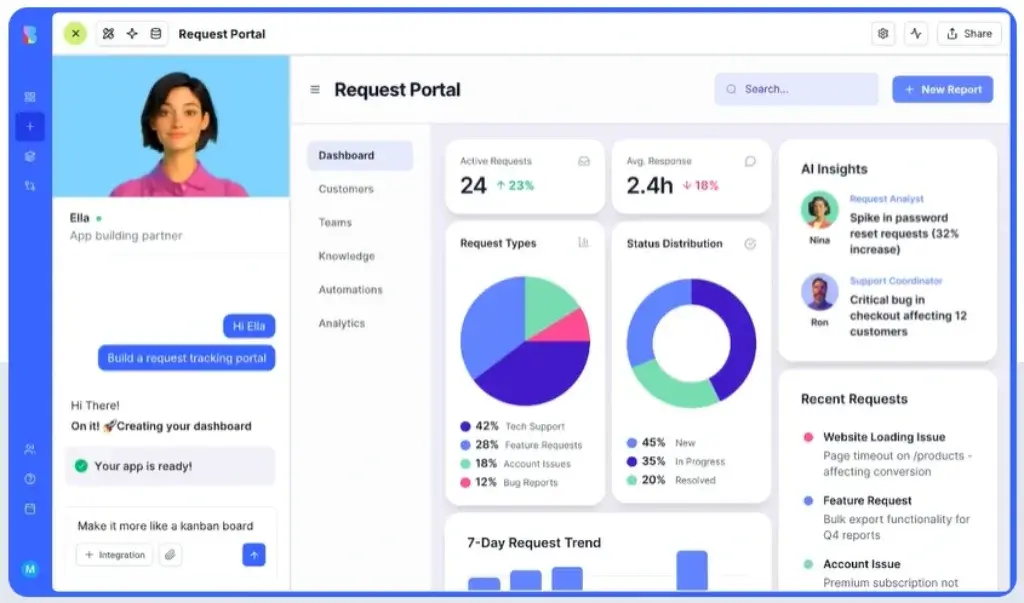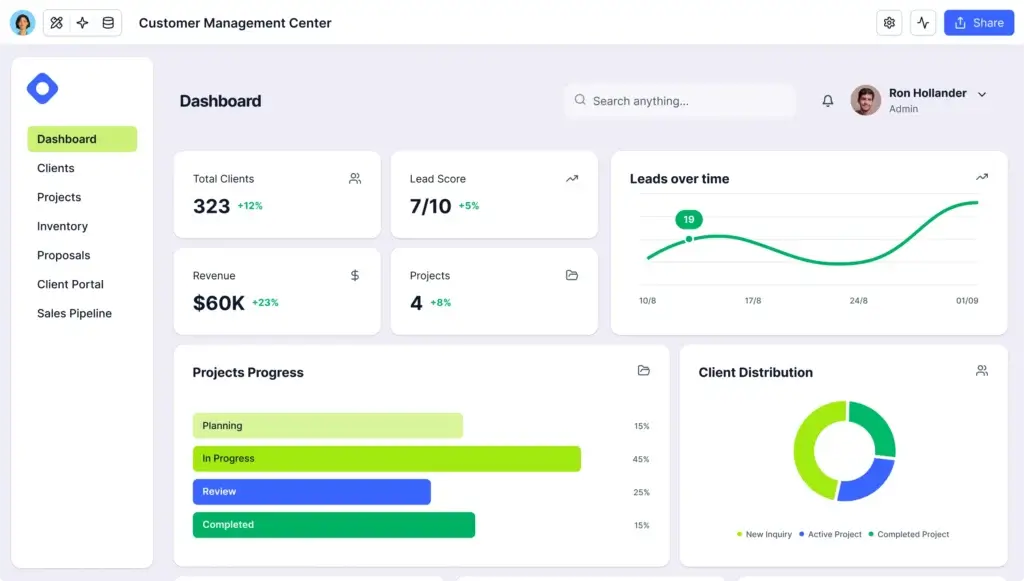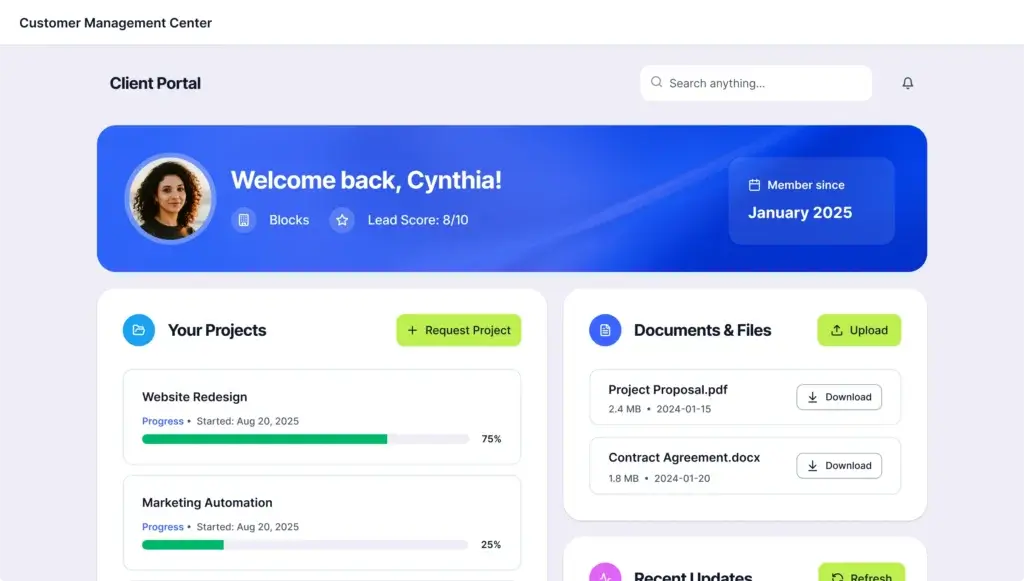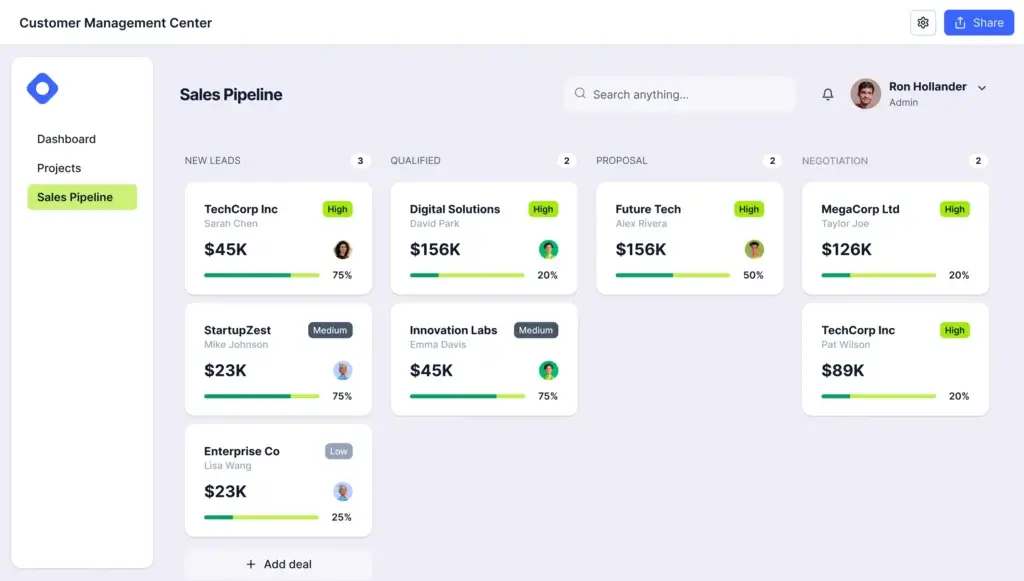Introduction
Blocks positions itself as a modern AI-first coding workspace designed to accelerate the way you build software. Instead of operating like a traditional IDE, Blocks blends code editing, multi-agent automation, system design, and collaboration into one unified environment. You get an AI-driven setup that helps you move from idea to functional code with more speed, structure, and confidence.
As AI-assisted development becomes a core part of the engineering workflow, tools like Blocks offer you a chance to work faster without sacrificing clarity or quality. Whether you’re a solo developer testing ideas or a growing team building production-level applications, Blocks aims to give you an efficient workspace that reduces friction in every step of the development cycle.
If you’re exploring AI coding platforms such as Cursor, Emergent, or Lovable, Blocks stands out as a strong contender thanks to its clean interface, multi-agent coding capabilities, and structured automation features.
What Is Blocks?
Overview of Blocks’s Coding Agent Platform
Blocks is an AI-powered coding workspace built to help you move from idea to working software with far less overhead. Instead of acting like a basic autocomplete tool, Blocks combines AI code generation, multi-agent automation, system design tools, and a clean editor into one environment where you can build, refactor, and ship full applications.
The platform focuses on what many developers call “vibe-coding” – you describe what you want to build, the experience you’re aiming for, and any constraints or architectural preferences, then the system turns that intent into structured code, UI components, and workflow logic. You can refine ideas conversationally, and the AI updates or regenerates code across the project.
Behind the scenes, Blocks uses a mix of large language models, agent coordination, and workspace orchestration. You interact through a natural chat-driven interface, while the system writes and organizes your code in real time. A browser-based editor lets you inspect, modify, and run everything. The platform focuses strongly on speed, clarity, and an intuitive workflow rather than overwhelming you with tooling.
How Blocks Works Behind the Scenes
When you enter a prompt, Blocks prepares a workspace tailored to the project you’re building. It does not restrict you to a rigid full-stack template, but it gives you a clean foundation and automates the repetitive setup work so you can stay focused on logic and design. A high-level breakdown looks like this:
Interpreting your intent
Blocks analyzes the description, extracting core features, user flows, and architectural hints. If something is unclear, the system asks follow-up questions about data structures, integrations, UI behavior, or constraints.
Generating and organizing the codebase
The workspace is populated with files, dependencies, and a clean folder structure. Blocks writes components, API logic, scripts, utility modules, or any other pieces required for your project. It keeps everything aligned with your style and instructions.
Using agents to build complex features
Blocks can coordinate multiple AI agents that work through tasks concurrently. While one agent generates UI components, another might update data models or handle routing. This multi-agent approach helps speed up bigger changes across your codebase.
Letting you modify and inspect everything
Blocks opens the entire environment inside a lightweight web editor. You can jump through folders, edit files manually, or request revisions through natural prompts. The system explains major changes so you maintain full visibility into your project.
Previewing and testing
You can test your project inside the workspace, see output instantly, and iterate quickly. The AI helps debug issues or improve logic based on your feedback.
Deploying your project
When you are satisfied, Blocks provides a streamlined process for deploying your code. The platform can prepare hosting, generate build configurations, and publish a live version of your app. You receive a shareable URL without needing to handle complex deployment pipelines yourself.
Key Use Cases for Developers and Teams
Blocks is ideal for:
- Rapid prototyping
You can turn product ideas into functional previews quickly. This supports early-stage validation, investor presentations, and fast iterations. - Founders and startup teams
If you’re building an MVP, Blocks reduces development friction so you can focus on testing assumptions and gathering user feedback. - Internal tools and operational apps
Many teams use Blocks to create dashboards, internal utilities, analytics tools, and workflow automations without heavy engineering investment. - Solo developers
Blocks handles repetitive coding tasks while you remain in control of architecture and design. It keeps your workspace organized and helps you maintain consistency across files.

Key Features
Blocks Features Review
Blocks packs a wide range of AI-powered capabilities designed to streamline coding, automate workflows, and support teams working on increasingly complex applications. Each feature contributes to a more fluid development experience, especially when you’re trying to ship quickly without getting lost in repetitive tasks.
AI-Powered Code Generation and Refactoring
Blocks uses advanced AI models to write, modify, and optimize your code. You can generate new components, fix errors, restructure files, or request improvements with short prompts. This helps you speed through routine development work and focus more on architectural decisions.
Tasks such as debugging, converting code between languages, and rewriting modules become more manageable with the built-in AI assistant. The value becomes even more noticeable when you’re iterating through multiple versions of a feature.
Multi-Agent Coding Capabilities
One of the standout features of Blocks is its multi-agent system. Instead of relying on a single AI assistant, you can trigger coordinated agents that perform tasks in parallel. This is especially useful for more complex workflows such as:
- Generating multiple services at once
- Refactoring an entire module tree
- Auditing large codebases
- Preparing boilerplate for new features
💡 This is where Blocks feels more advanced compared to lightweight AI coding assistants.
Real-Time Collaboration Tools
Blocks supports team collaboration directly inside the workspace. You can share sessions, review AI-generated code together, and maintain context without switching to another platform. This makes Blocks a viable option for distributed teams that want to stay aligned during fast-paced development cycles.
Project Templates and Workflow Automation
The platform offers prebuilt templates that help you start new projects quickly. You’ll find templates for full-stack apps, APIs, microservices, and other common setups. Combined with Blocks’ automation triggers, you can streamline your initialization process and ensure your team follows consistent guidelines.
Pros and Cons
Blocks’ Advantages and Limitations
Positive
✅ AI-first workflow that speeds up development
✅ Multi-agent capabilities
✅ Simple, clean interface
✅ Flexible
Negative
❌ Limited ecosystem
❌ Not always ideal for very large or long-term codebases
❌ Deployment features may feel basic
❌ Still evolving
✅ Pros
Blocks includes several advantages that make it an appealing workspace for individual developers, technical founders, and small to mid-sized teams.
-
AI-first workflow that speeds up development
Blocks is designed around conversational coding, giving you a natural way to generate, improve, and debug code without jumping between multiple tools. This shortens the time it takes to move from idea to implementation. -
Multi-agent capabilities for complex coding tasks
Instead of relying on a single assistant, Blocks lets multiple agents coordinate tasks like structuring folders, updating API routes, or modifying shared logic. This helps accelerate work that normally requires repetitive manual effort. -
Clean, beginner-friendly interface with minimal clutter
The workspace feels smooth, organized, and distraction-free. If you’re new to AI coding tools, Blocks makes it easier to understand what’s happening and maintain visibility across your entire project. -
Strong fit for prototyping, MVPs, and rapid experimentation
You can explore product ideas, build small apps, or test concepts quickly. Blocks is particularly helpful when you’re validating early-stage ideas or preparing demos for stakeholders. -
Flexible enough to support manual coding when needed
Even though it’s heavily AI-driven, Blocks gives you full access to the editor. You can adjust code by hand, split logic into modules, or restore older approaches while still benefiting from automation.
❌ Cons
Despite its strengths, Blocks is still an evolving platform, and there are some trade-offs that might affect teams looking for advanced infrastructure or production-grade stability.
-
Limited ecosystem and fewer integrations compared to mature IDEs
Blocks currently offers a smaller library of plugins, integrations, and extension points. If you rely heavily on third-party tools or custom dev tools, this may feel restrictive. -
Not always ideal for very large or long-term codebases
While the platform handles small and mid-sized projects well, larger enterprise-level systems may require more extensive tooling, deeper DevOps control, and better long-range project organization. -
Deployment features may feel basic for experienced DevOps teams
Blocks supports easy deployments, but it doesn’t yet offer advanced configuration control, multi-environment pipelines, or granular deployment settings found in more established platforms. -
Still evolving, with features subject to rapid change
As Blocks is relatively early in its product journey, some workflows, interfaces, and capabilities continue to shift. This can be exciting but also unpredictable if you prefer more stable tools.

Speed and Quality
Blocks Performance and Accuracy
Blocks is built to give you a fast, responsive, and reliable AI-coding experience. Its performance stands out most when switching between tasks, generating code, or coordinating multiple agents. The platform maintains a smooth workflow even when you work on larger projects or issue several complex instructions in sequence. This makes Blocks feel lightweight despite the heavy AI operations running in the background.
When it comes to accuracy, Blocks delivers high-quality code generation for common frameworks, modern JavaScript environments, and general-purpose scripting. You’ll see consistent results when requesting feature implementations, structural changes, or bug fixes. The system also explains its decisions clearly, helping you keep track of why specific lines of code were generated or modified.
Accuracy improves further as you interact with the workspace. Blocks stays aligned with previous instructions, coding style preferences, and architectural patterns you establish early in the project. This continuity helps reduce code conflicts and makes the environment feel more predictable as your app grows.
While Blocks performs impressively in most scenarios, it may occasionally produce incomplete logic for more advanced workflows that require deeper domain expertise. In these cases, you can refine your request or adjust the generated code manually. The platform is optimized for speed and iteration, allowing you to fine-tune outputs without slowing down your development flow.

User Experience
Blocks Ease of Use
Blocks delivers a streamlined workspace focused on clarity, speed, and control. The environment feels intentionally minimal, helping you stay focused on your code and AI interactions without unnecessary visual noise. If you prefer tools that reduce cognitive load, Blocks creates the right balance between simplicity and capability.
The interface uses a familiar panel layout, so you can explore files, review agent outputs, and edit code without navigating through complicated menus. You get helpful contextual explanations from the AI, making it easier to understand why certain decisions were made. This transparency is valuable when you’re iterating quickly or refining architectural direction.
Navigation between files, agent logs, and live previews is smooth and responsive. Blocks keeps operations snappy, even when generating large sections of code or coordinating multiple AI agents. This gives you a consistent sense of momentum, especially during early prototyping or when building interactive demos.
If you’re new to AI coding tools, the onboarding experience is straightforward. You can start with a blank workspace, a template, or a guided setup. The platform helps you understand how prompts should be structured while giving you enough flexibility to explore freely. More advanced users benefit from the ability to bypass tutorial layers and dive directly into building.

Pricing and Plans
Blocks Pricing in 2025
Blocks uses a usage-based pricing model designed to accommodate individual developers as well as growing teams. Instead of rigid subscription tiers, the platform adjusts to how much AI generation, agent activity, and processing you consume. This gives you better cost control, especially if your work involves frequent prototyping or exploration.
The entry-level plan lets you experiment with the environment, generate smaller components, and understand how the AI behaves. As you scale into bigger features or more frequent multi-agent tasks, you can move into paid plans that offer increased usage, team collaboration, and priority processing.
Paid plans typically unlock additional collaboration features, extended project resources, and faster AI operations. The pricing is structured to keep early costs reasonable while still offering the power required for sustained development.
Blocks vs Alternatives Pricing Overview
| Feature Type | Blocks | Cursor |
| Pricing Model | Usage-based | Fixed monthly tiers |
| AI Coding Tasks | Included | Included |
| Multi-Agent Support | Available | Partial |
| Collaboration Tools | Paid tiers | All tiers |
| Project Templates | Included | Included |
Alternatives
Blocks vs Competitors
Blocks sits in a competitive landscape of AI-driven coding tools that aim to simplify development workflows. Different platforms excel in different areas, so choosing the right alternative depends on your priorities, preferred coding style, and project complexity. Below is a breakdown of how Blocks compares to Base44, Lovable, Cursor, and Emergent.
Base44
Base44 offers more of an end-to-end platform for building, managing, and deploying content-driven AI applications. While Blocks focuses on code-level productivity and multi-agent operations, Base44 emphasizes structured workflows, reusable components, and data-driven outputs.
Base44 may be a better fit if you need:
- A framework designed for AI-native app development
- Built-in versioning and content pipelines
- Highly structured output formats
- Multi-workspace collaboration
Blocks remains stronger in conversational code editing, refactoring, and rapid technical iteration.
Lovable
Lovable is built for creators who want to generate complete apps with minimal manual coding. It leans heavily on natural-language prompts and visual scaffolding. Compared to Blocks, Lovable feels more like a hybrid between no-code and AI-assisted coding.
Lovable may be a better choice when:
- You want full apps generated automatically
- You prefer fewer manual edits
- You focus on prototypes, landing pages, or simple SaaS ideas
Blocks is more suitable if you need long-term ownership of code structure or deeper control over logic and architecture.
Cursor
Cursor is one of the most direct alternatives to Blocks, offering a VS Code-like environment with strong AI assistance. Cursor excels at deep code refactoring, integrations with developer tools, and consistent productivity features for larger projects.
Cursor might be a stronger fit if you want:
- A familiar IDE with extensions and keybindings
- Advanced debugging and code navigation
- Better support for complex, long-term codebases
Blocks still stands out in multi-agent operations, simplicity, and speed for early-stage development.
Emergent
Emergent is a full-stack AI development environment designed for building complete applications from prompts. Compared to Blocks, Emergent automates more of the process, from architecture to deployment, using multiple agents that handle front-end, back-end, and database work.
Emergent is best when:
- You want an end-to-end app built from a single description
- You need automatic scaffolding for complete systems
- You want deployment handled natively
Blocks offers more flexibility for manual control, modular builds, and iterative development that requires precise code adjustments.
Which Alternative Should You Choose?
Each tool fits a slightly different audience:
- Choose Blocks if you want speed, a clean workspace, multi-agent coding, and strong refactoring support.
- Choose Cursor if you want a powerful AI assistant inside a traditional IDE.
- Choose Emergent if you want full-stack applications generated automatically.
- Choose Lovable if you want simple app creation with minimal code interaction.
- Choose Base44 if you need a structured platform for AI-native product workflows.
Getting Started Guide
How to Get Started With Blocks
Blocks gives you a fast and intuitive way to turn ideas into working code, but you get the best results when you follow a clear workflow. This section walks you through the ideal steps for onboarding, structuring your workspace, and using Blocks’ AI and multi-agent tools effectively.
1. Create Your Workspace and Choose a Starting Point
Once you sign up, Blocks prompts you to create a new workspace. You can begin with a blank environment or choose from starter templates designed for apps, APIs, dashboards, or scripts.
If you are exploring the platform, templates help you understand how Blocks organizes files and uses agents to generate code. For custom projects, the blank workspace gives you full creative freedom from the start.
2. Start With a Clear Prompt
Blocks performs best when your initial prompt includes:
- The core feature or app idea
- The type of user experience you want
- Any required integrations or data models
- Constraints such as preferred frameworks or libraries
A well-structured first prompt sets the tone for the entire project and helps Blocks produce cleaner architecture from the beginning.
3. Use the Chat Interface for Iteration
The chat panel is your primary control center. You can:
- Refine components
- Request new features
- Ask for explanations
- Trigger multi-agent tasks
Blocks remembers context, so your instructions become more accurate as the project evolves.
4. Explore and Edit Files in the Built-In Editor
Blocks provides a simple editor where you can inspect and modify every file. You can switch between:
- Components
- API routes
- Utility files
- Stylesheets
- Configurations
Editing manually helps you maintain full ownership of the code, while still getting value from AI-generated structure.
5. Use Agents for Larger, Structured Tasks
Multi-agent workflows are one of the strongest features of Blocks. Use them for:
- Refactoring entire folder structures
- Updating multiple modules at once
- Creating services or pages with shared dependencies
- Performing global logic changes
You get better results when you assign strategic tasks to agents rather than issuing short, isolated prompts.
6. Test and Preview Frequently
Blocks allows you to test your app inside the workspace. Running previews helps you:
- Catch logic errors early
- Validate UI behavior
- Review agent-generated updates
- Adjust your instructions more precisely
Fast iteration cycles make the platform ideal for prototyping and MVP development.
7. Use AI Explanations to Improve Code Understanding
Whenever Blocks generates or modifies code, you can ask for explanations. This is useful when:
- Reviewing architectural choices
- Learning unfamiliar frameworks
- Understanding how agents coordinated tasks
These insights reduce confusion and help you maintain control over your project.
8. Deploy When You’re Ready
When your application is stable, Blocks offers simple deployment workflows. You can publish directly from the workspace and receive a shareable URL. If you need to iterate after deployment, you can push updates quickly without complicated configuration steps.
Conclusion
Final Thoughts
Blocks offers a modern approach to AI-assisted development that balances speed, control, and clarity. You get a clean workspace where you can iterate quickly, refine ideas through natural prompts, and rely on multi-agent workflows to handle complex updates across your project. The platform makes it easier to move from concept to working code without losing visibility or ownership of your architecture.
If you are building prototypes, MVPs, internal tools, or iterative product updates, Blocks gives you the flexibility and responsiveness needed to work efficiently. It is not the most mature platform for enterprise-scale projects or advanced DevOps environments, but it delivers strong performance for developers who value simplicity, fast execution, and a productive AI-first workflow.
Whether you are a solo developer experimenting with new ideas or a startup looking to move quickly, Blocks provides an environment that helps you stay focused on building meaningful features rather than getting stuck on repetitive tasks. If you want a streamlined and intuitive AI coding experience, Blocks is a strong platform to consider.
Have more questions?
Frequently Asked Questions
1. What is Blocks used for?
Blocks is an AI-powered coding workspace that helps you generate, refine, and maintain code using natural prompts and multi-agent workflows. It supports rapid prototyping, MVPs, and iterative development.
2. Is Blocks good for beginners?
Yes. The interface is simple, the instructions are conversational, and the workspace is easy to navigate. Beginners can explore, iterate, and learn without feeling overwhelmed.
3. Can Blocks build full applications?
Blocks can generate complete components, APIs, logic, and project structures. You can use it to build full applications, especially for early-stage products and internal tools.
4. Does Blocks support collaboration?
Blocks supports collaboration features in paid plans, allowing teams to share context, review code, and work with AI together inside the same environment.
5. How accurate is Blocks when generating code?
Blocks delivers strong accuracy for modern JavaScript, full-stack templates, and general-purpose scripting tasks. Accuracy improves as you refine prompts and maintain consistent instructions.
6. Does Blocks integrate with GitHub or external tools?
Blocks offers Git-based workflows and compatibility with common development practices, although its integration library is smaller than mature IDEs.
7. Is Blocks free to use?
Blocks offers a starting tier with limited usage. Paid plans unlock higher AI usage, multi-agent operations, and team features.
8. Who is Blocks best for?
Blocks is ideal for solo developers, startup founders, designers exploring prototypes, and teams working on internal tools or early-stage versions of their product.
9. Can I manually edit code inside Blocks?
Yes. You retain full control over the codebase. You can edit files directly in the built-in editor or let the AI update logic based on your instructions.
10. How is Blocks different from tools like Cursor or Emergent?
Blocks focuses on simplicity, multi-agent workflows, and fast iteration. Cursor is better for larger codebases inside a traditional IDE, while Emergent automates full-stack generation from high-level prompts.




